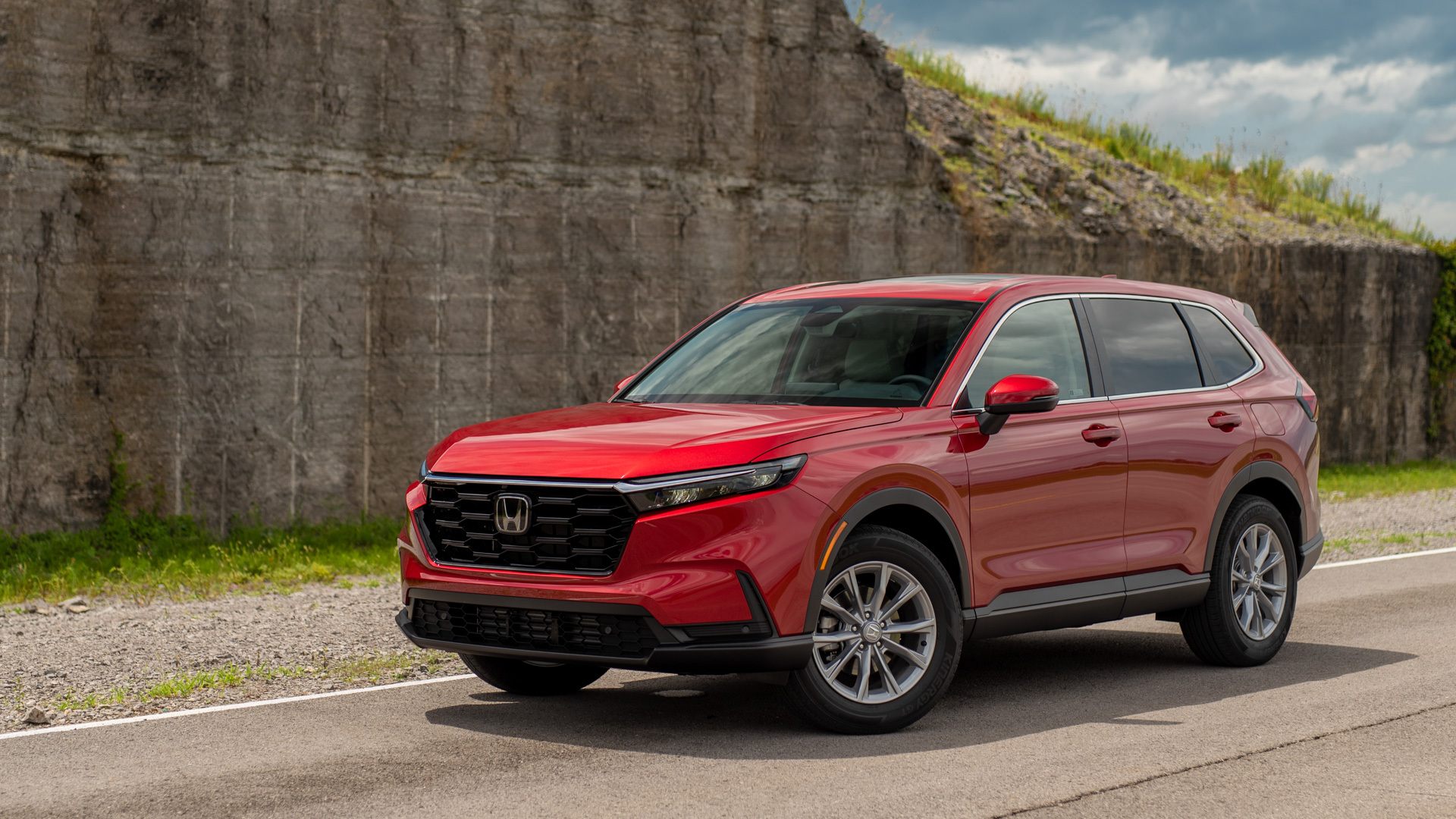Americans cannot get enough of crossovers, and nothing is more emblematic of that than the Honda CR-V. It is arguably as much a standby of present-day American car culture as classic domestic sedans were in years gone by, and its popularity reflects that: as of August 2020, 5,963,369 have been sold in the United States alone since its introduction in 1997, a figure that surely exceeds 6 million today. As recently as April of this year, it was the fastest-selling new car in the U.S. If period dramas about the 2020s ever get made, a modern CR-V parked in a suburban driveway will be the quickest way to remind audiences of the time and setting the series takes place in.
As a result of this overwhelming popularity, any update is naturally going to be a big deal. Honda didn’t hold back with the 2023 redesign, taking the sharp exterior style and modern, habitable interior from the recently-updated Civic and Accord, and sizing them up a bit for the CR-V. The package keeps the CR-V’s everyman appeal while updating it for the ‘20s, likely guaranteeing its continued, and overall rightful, dominance.

2023 Honda CR-V Review Specs
Base price (EX-L AWD as tested): $32,355 ($36,505)
Powertrain: 1.5-liter turbocharged inline-four | continuously variable automatic transmission | front-wheel or all-wheel drive
Horsepower: 190 @ 6,000 rpm
Torque: 179 lb-ft @ 1,700 rpm
Curb weight: TBD
Seating capacity: 5
Cargo volume: 36.3 cubic feet (76.5 cubic ft. with seats folded)
Fuel economy: 28 mpg city | 34 highway | 29 combined (FWD); 27 city | 32 highway | 29 combined (AWD)
Quick take: Honda’s CR-V is still, as it’s always been, Really Good.
Score: 8.5/10

The Playing Field Is the Same, Just Bigger
The new CR-V doesn’t get a massive reengineering under the skin despite its drastic change in appearance. This sixth generation is still available in either front- or all-wheel-drive while a mildly updated 1.5-liter turbo four-cylinder makes the same 190 hp as before and is mated to the same CVT. Fuel economy numbers are identical to the outgoing car’s 28 city and 34 highway mpg, given this new version’s essentially identical drivetrain. (An updated hybrid model good for up to 40 combined mpg is also in the works but wasn’t available to test yet, so I’ll be focusing on the gas-powered version here.)
Looking beyond mechanicals, however, it’s apparent the CR-V has changed drastically. Gone is the relatively bland fifth-generation sheet metal; now, it actually looks fairly memorable, with Honda going Mendel on its lineup to create the new design, cross-pollinating the sharp headlights and belt lines of the Civic with the rugged upright grille and macho bumpers of the Ridgeline. The resulting hybridization of styles is a marked improvement in my book, even if the hood length feels a little awkwardly long when viewed from the side. Although, if you ask me, I’d rather have an odd quirk like that and actually remember what the car looks like than drive something wholly forgettable.
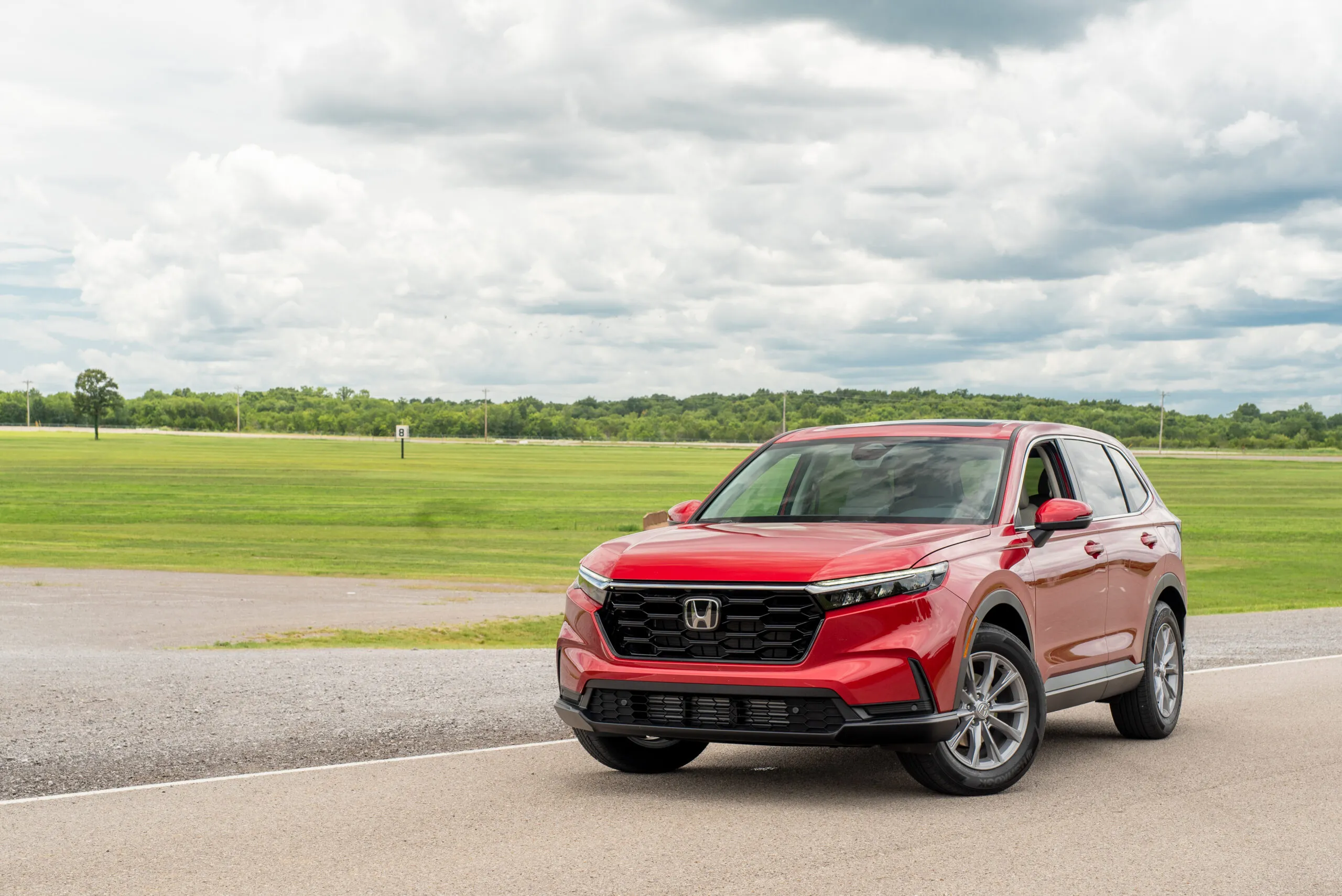

All that fresh sheet metal is bigger, too, with the new CR-V getting a 1.6-inch longer wheelbase, roughly half an inch of track width, and two-and-a-half inches of overall length over the outgoing model. As a result, Honda also notes it has the most cargo capacity and legroom of any CR-V so far. Luckily, Honda’s crossover hasn’t become lane-wanderingly massive despite its increased heft, but more on that in a bit.
Inside, buyers find either cloth or leather seats paired with a centrally-mounted seven- or nine-inch touchscreen, depending on whether they opt for the base EX trim or the higher EX-L package. EX-L buyers also get wireless charging, as well as untethered Apple CarPlay and Android Auto, plus an extra pair of speakers. (EX buyers have to bring cables for their phones and live with just six speakers.) I tested an EX-L, but the feature list isn’t a massive difference, so I wouldn’t feel too bad pocketing the extra $2,650 Honda asks for the “-L” in exchange for having to bring along my Lightning cable.
Honda’s Benchmark


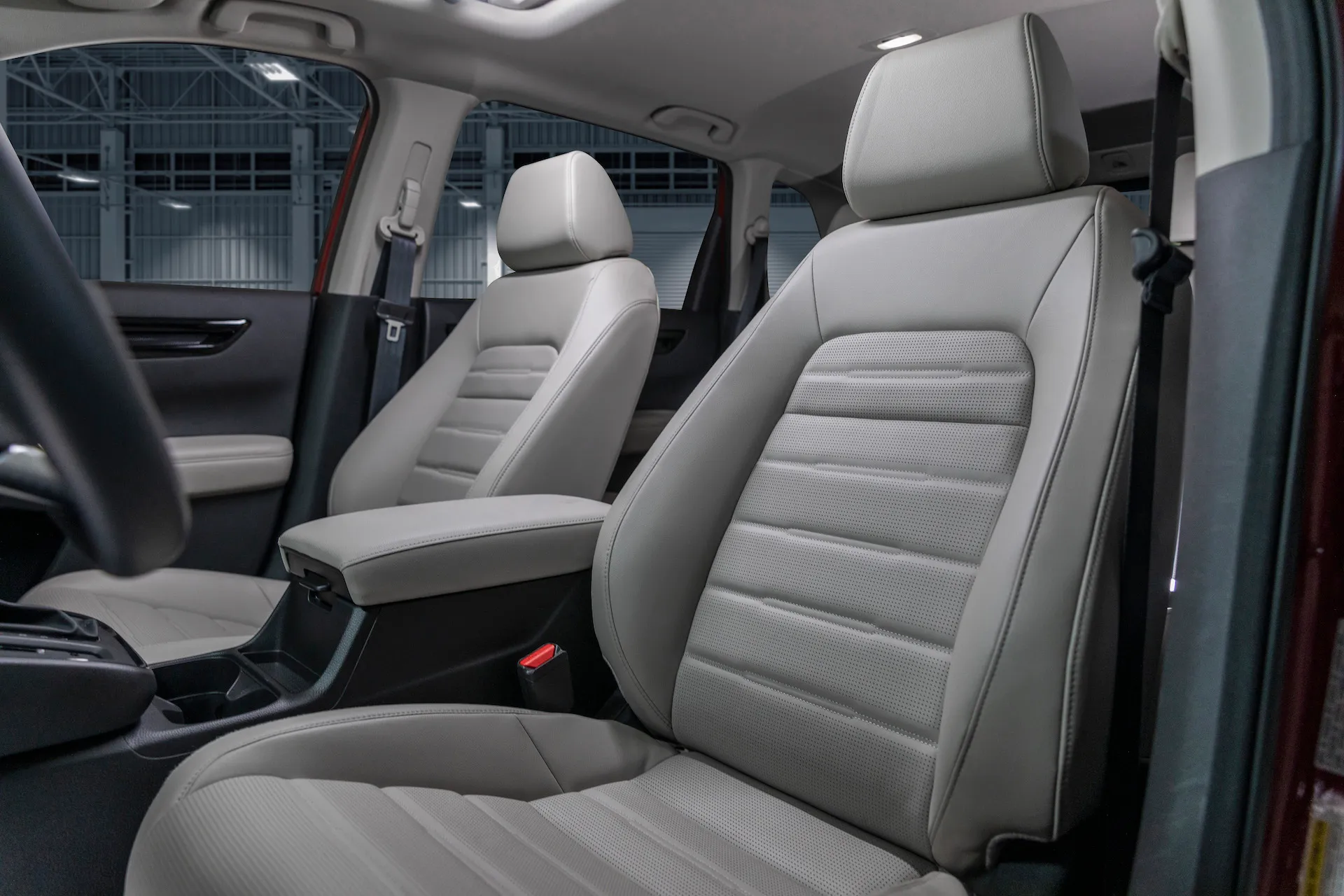

Regardless of trim, in motion, the CR-V delivers exactly what it has always promised. The interior, with its well-integrated touchscreen and physical knobs for climate controls and stereo volume, is delightfully user-friendly while the eight-way adjustable seats are an absolute cinch to get comfortable in. Popping into the back seat to ride behind a six-foot-tall driver still left me ample room for my lanky legs. The driving—and riding passenger—experience is consistent with what I would expect for an SUV Honda’s had 25 years to refine; it is, in short, Really Good.
By Really Good, I mean that the average buyer won’t ever need to notice the ways in which it excels, because it’s engineered to be silently competent. Honda accomplishes this with elements like thin and well-sculpted A-pillars, which give excellent sight lines and help keep the car from feeling overly wide. As another example, the steering has a firm initial response that helps dampen sudden moves and keep the car from feeling vague; that excellent steering feel is paired with comfortably pliant suspension valving and relatively soft anti-roll response. These individual pieces together work in concert to make the CR-V feel like it has just enough heft to handle like an SUV, without ever verging into feeling unwieldy.
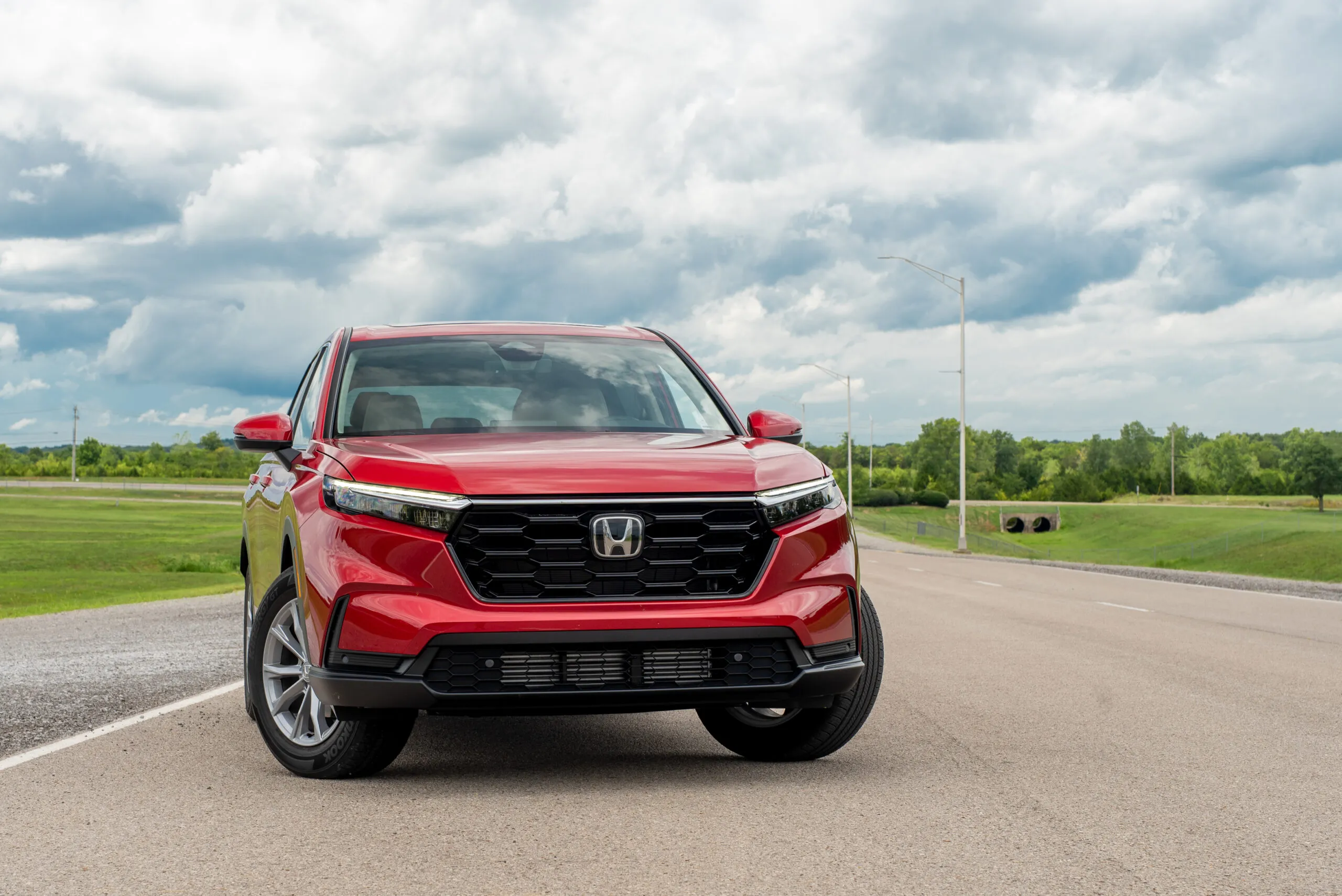

The drivetrain, similarly, is resoundingly solid. The diminutive 190-hp 1.5-liter doesn’t make the CR-V the most powerful crossover in its class (Toyota’s RAV4 still has 15 more hp), but the peak torque kick at 1,800 rpm means it never feels sluggish when turning onto a country road. Even the CVT responds rapidly enough that 95% of the time—two-lane-highway-dashed-yellow passing included—it’s easy to forget it’s a CVT, kicking the 1.5-liter to life pretty quickly with stabs of the gas.
All of this silent excellence exists because Honda still understands who buys a CR-V. If you need to get groceries, drive to work, and perhaps pick up kids from school, you need a car that does all that without forcing you to actively think about your car. All of the aforementioned bright points I’ve mentioned are laudable, but even if I weren’t actively reviewing the CR-V, I would still step out and say “I really liked it,” because every component in this Honda works seamlessly together, without ever calling attention to any single element.

Unfortunately, this test drive was a short one and didn’t involve interstate highways or stop-and-go situations, so there’s still the potential for unseen weaknesses. My main concern is that the 1.5-liter might run out of oomph during faster merges (although it still pulls hard up to around 55 mph, in my testing), and I’d also still like to see how that comfortably-on-the-soft-side suspension handles repetitive pavement gaps at high speeds.
Still, I’m pretty comfortable saying it’s Really Good, given this thing’s 25-year-long track record.
Understanding Its Point

It was never an inevitable fact that Honda would become the de facto first choice for American crossover shoppers; Honda’s first entry into the burgeoning U.S. SUV market was a badge-engineered Isuzu. The CR-V was the company’s first homemade attempt, and—with its built-in picnic table, vertical D-pillar taillights, and spare tire casually hanging off of its tailgate like a backpack—that original CR-V embodied a quirkier spot in the market that reflected the crossover’s appeal to a specific kind of buyer. By 2007, however, as the CR-V found its stride, it had surpassed the Odyssey in sales as consumers eschewed the minivan for the crossover. By 2014, it surpassed the long-running Civic’s sales. Since then, it’s been Honda’s best-selling vehicle, and the company has never lost the plot.
In this sixth generation, there is no rugged, all-terrain-bedecked offroader trim or shoehorned-in-luxury upsell. Honda understands that’s never been what made the CR-V the first choice for American buyers. Instead, you get two choices: Really Good, and Really Good (With Leather). That’s what the CR-V has always delivered, and it’s still got it.
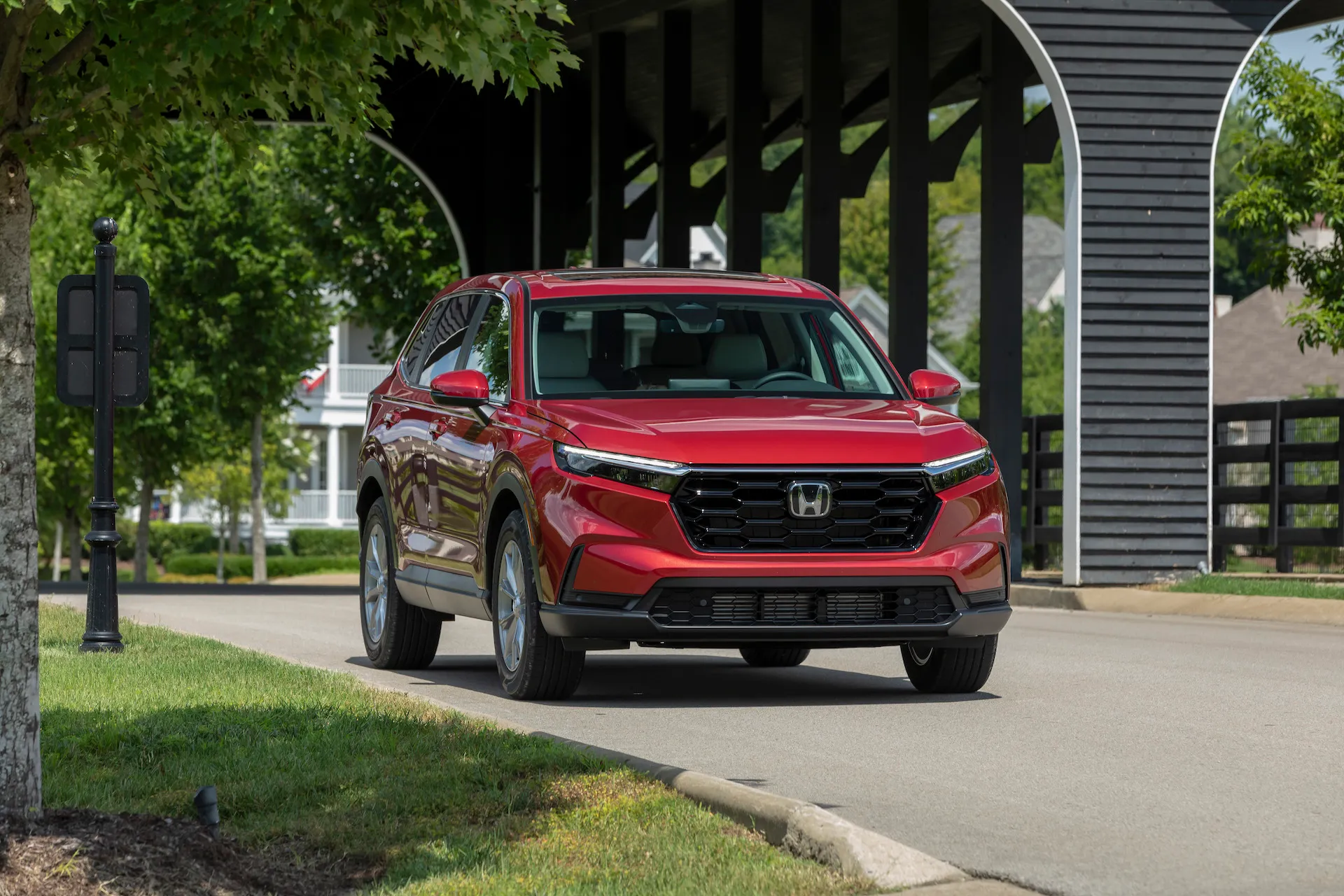
Got a tip? Email tips@thedrive.com
